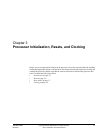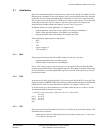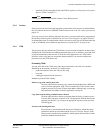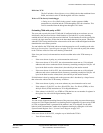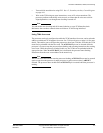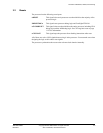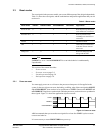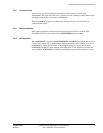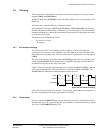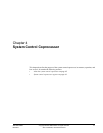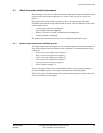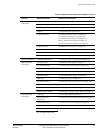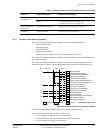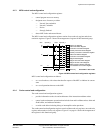
Processor Initialization, Resets, and Clocking
ARM DDI 0363E Copyright © 2009 ARM Limited. All rights reserved. 3-7
ID013010 Non-Confidential, Unrestricted Access
3.3 Reset modes
The reset signals in the processor enable you to reset different parts of the design independently.
Table 3-1 shows the reset signals, and the combinations and possible applications that you can
use them in.
Note
If nRESET is set to 1 and nSYSPORESET is set to 0 the behavior is architecturally
Unpredictable.
This section of the manual describes:
• Power-on reset
• Processor reset on page 3-8
• Normal operation on page 3-8
• Halt operation on page 3-8.
3.3.1 Power-on reset
You must apply power-on or cold reset to the processor when power is first applied to the
system. In the case of power-on reset, the leading, or falling, edge of the reset signals, nRESET
and nSYSPORESET, does not have to be synchronous to CLKIN. Because the nRESET and
nSYSPORESET signals are synchronized within the processor, you do not have to synchronize
these signals. Figure 3-1 shows the application of power-on reset.
Figure 3-1 Power-on reset
ARM recommends that you assert the reset signals for at least four CLKIN cycles to ensure
correct reset behavior.
It is not necessary to assert PRESETDBGn on power-up.
Table 3-1 Reset modes
Reset mode nRESET PRESETDBGn nSYSPORESET nCPUHALT Application
Power-on reset 0 x 0 x Reset at power up, full system
reset. Hard reset or cold reset.
Processor reset 0 x 1 x Reset of processor only,
watchdog reset. Soft reset or
warm reset.
Normal 1 x 1 1 Normal run mode.
Halt 1 x 1 0 Halt mode, provided normal
mode has not been entered
since reset.
Debug reset x 0 x x Resets all debug logic and
debug APB interface.
CLKIN
nRESET
nSYSPORESET





